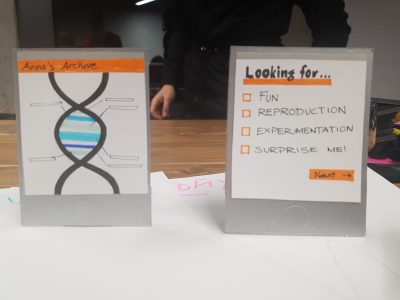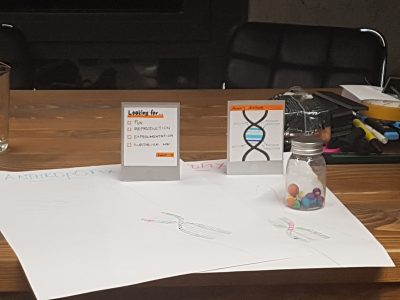
In the past few weeks, the news of Chinese scientist He Jiankui germline editing twins of a HIV positive couple in vitro has raced around newsfeeds. He edited the CCR5 gene in the twins in an attempt to create resistance to HIV. He used a gene-editing tool called CRISPR (which is short for: Clustered Regularly Interspaced Short Palindromic Repeats). CRISPR is regularly used in genetic engineering in controlled lab contexts, but how it fares in the wild is unknown. Bill Gates has been enthusiastic about the possibilities of future applications of CRISPR to address various ‘Third World’ health and development problems.
That He used CRISPR on humans and how he did it, have fueled discussions about bio-ethics and genetic engineering. One of the best reviews of the ethical issues surrounding the CRISPR-ing of the embryos comes from Ed Yong writing in the Atlantic. For those consumed with questions of ethics in emerging new technologies, the history and development of ethics in genetics and nuclear energy management are great first ports of call.
This week I went to a speculative design workshop about CRISPR-Cas9 (CRISPR-associated protein 9) hosted by Emilia Tikka, a Berlin-based artist and designer whose practice deals with the philosophical and cultural implications of biotechnologies, at STATE Studio.
I’m fascinated by the recent popularity of Speculative Design / Design Fictions / Futures-Thinking as methods, and as spaces for the design of advocacy materials in the art, academic, civil society, and technologist communities.
Some thoughtful examples that are reflections on technology, society and culture include: Julia Kloiber’s Ding Magazine produced by the Mozilla Foundation, Sasha Costanza-Schock and Joana Varon’s Transfeminist Tech Oracle, and Ruha Benjamin’s The Future is Ferguson and Lou Cornum’s The Irradiated International as part of Future Perfect. Coming up this weekend (Dec 15-16) is an Asia-focused SF writing workshop hosted by the Digital Asia Hub in Singapore. (Note: I have personal friendships and/or professional relationships with all of these people)
[For a critique of the spread of design thinking and speculating about the future through design, Silvio Lorusso has a great Medium piece here. Hat tip to Johannes Bruder for this reference]
Rather than conceiving an entirely new world, which a Speculative Futures or Design Fiction process might actually be about and is actually really hard to do, we often go into workshops about AI (Artificial Intelligence) and ML (Machine Learning) to talk about what is happening now. AI and ML technologies are already being applied without adequate testing and calibrating for their social impact. The results are disturbing. I believe many of us are drawn to these workshops and speculative methods as emotional, supportive, collaborative spaces to talk about how we want to fix society now, and how AI/ML technologies are ferocious amplifiers of social dynamics that are already violent and skewed.
Thinking about speculative futures involving gene editing is not a ‘now’ kind of problem, He Jiankui’s experiment notwithstanding. Engaging with bio-futures often involves de-centering the human being rather than thinking about how to stop fascists using AI technologies next week. Bio-futures scenarios also do not necessarily involve maintaining humans and human societies as we know them now.
Tikka let us choose the groups we wanted to be part of: the future of food, post-humanism, enabling longevity, the creation of hybrid species. Each group was given a big ‘what if’ question like, ‘what if genetic engineering did away with needing to cook food?’ And then had to focus on building a story around an everyday scenario, like ‘what does shopping at the supermarket look like?’, or, ‘what is a family dinner like?’ We had lots of great arts and crafts materials to work with.
I was in the group motivated by posthumanism, and we were given the question: what if we could create new species? It took us a long time to work through this. We talked about possibly creating bizarre chimeras (but to what end? just because we can?), or increasing the numbers of a dying species. But what would it mean to resurrect one species and not an entire ecosystem? If we allowed some kinds of bees to survive but not a kind of flower, then how would that affect the system? Why did we want to create species that would enable us to continue to live as we are? If we want to bring back an extinct species, how will it affect the ecosystem it enters? Tikka had referenced the case of the Harvard scientists resurrecting the Woolly Mammoth with CRISPR.
At every stage, the conversation pinged back and forth between what it would mean for human society to see the emergence of new species. But one member of our group kept bringing us back to the question of why we wanted to centre the human and human society in the first place. Why are we invested in humans continuing as we are? Having just seen Boots Riley’s darkly funny Afrofuturist take on posthumanism, Sorry To Bother You, I was all about embracing a future with strange creatures like Eco-Sapiens (though not necessarily in the way the Armie Hammer character in the movie proposed).
Our group finally decided on a future scenario we wanted to work with. We were motivated by the need to arrest the decline of what exists. In the future, humans have acknowledged our role in the extinction of species on the planet (Julian Oliver and Crystelle Vu’s Extinction Gong came up as an inspiration here). So the human body becomes a repository of genetic material being lost. Given that the planet is already fairly densely mapped and monitored by sensors, we are alerted to the dwindling of a species so that its genetic material may be harvested. This material is delivered to humans to ingest as pills from birth. It is now compulsory for humans to become living archives of genetic material being lost on the planet. It is a little like how we pay our taxes now. You have little control about exactly what kinds of material you have to carry. There is an entire, global scientific bureaucratic apparatus managing the process.
We wanted to assert that while almost everything about human society would change by the time this bio-future arrived, Capitalism and bureaucracies would still be functioning. And yes, there would also be resistors and people who did not want to ‘pay their taxes’ and believed in the superiority of ‘pure’ humans. Gene editing black markets would thrive like mosquitoes. Corruption in government would still exist.
We do not know how carrying other kinds of genetic material will affect the human body over time, and with its hormonal changes. But it is not actually the human body as it is now, anyway. You might be carrying the genetic material of salmon or trout, and for a period have nothing but beautiful, shimmery, pink skin eruptions. Or, someone else might develop only three toes and otherwise look entirely as humans do now; or develop fine hairs on their eyelids. Or nothing at all might happen. But you are a living, walking archive of something being lost from the planet, and you have the possibility to grow something new. Some genetic material might not survive at all, other material may go rogue and cause destruction; or, serendipity might strike somewhere and lead to the creation of a beautiful and harmonious new ecosystem. The Camille Stories in Donna Haraway’s latest book, Staying With the Trouble, was a connection Tikka saw in our thinking.

Our specific scenario in this posthuman future was: what does dating, hooking up and reproduction look like when we know we are carrying different kinds of genetic material within us? We came up with the idea of a dating app called AnthroFix; personal profiles display each person’s genetic code like personal data dashboards, in addition to what they are looking for: experimentation, fun, reproduction etc. Do people look for ‘sensible’ or ‘responsible’ matches, or just want to experiment to see what kinds of crazy new species might develop from their mating?
One member of the group persisted: but what if we change? What if we don’t want salmon skin or babies with hooves? Would any of this be ethical? But I believe the point of the discussion about posthumanism is to acknowledge that ‘we’ have to consider what it means to not be ‘we’ anymore. What kinds of ways are there to re-imagine humanity beyond definitions of human rights, and consider the human in relation to other organic and inorganic non-humans around us? Tikka made the point that we cannot project the ethics of now into a future society when we think about what possibilities exist with new future technologies.
I tend to agree, that with radical and strange new technologies, time travel means thinking and feeling in reduced oxygen, as it were. One has to get a little light-headed and embrace things that are horrific, bizarre and possibly cruel. (And all these horrific, bizarre and cruel things have already happened in the past anyway.) The role of artists and creative practitioners in this is critical. As someone in the workshop noted, Jules Verne imagined driverless cars quite easily and long before car companies did.
He Jiankui may not have done the right thing in experimenting with CRISPR as he did; and we also need to be wary of the Bill Gates-es of the world. Some of the most important work in STS (Science and Technology Studies) is about labs, government bureaucracies and everyday organisational, ‘boring’ infrastructures that create and contain ‘scientific’ knowledge. These alert us to the tensions in innovation, the need to keep an eye on social context, and how power accrues to those who make knowledge in these places. Whose Speculative Design Futures workshop happening where will shape the future of technologies like CRISPR?
